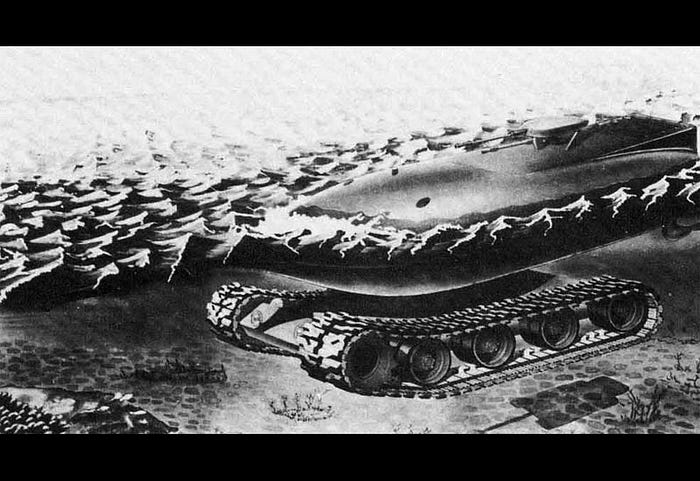 fter the two World Wars, the Americans could not settle for the idea of eternal world peace so the race for innovative military technology began even before the Cold War even began for them. With Russian covering so much land, therefore, owning many resources they had great capabilities (especially from a scientific point of view). In the 1950s the Americans came up with a concept that would have been known as the ultimate weapon today if it would have failed.
fter the two World Wars, the Americans could not settle for the idea of eternal world peace so the race for innovative military technology began even before the Cold War even began for them. With Russian covering so much land, therefore, owning many resources they had great capabilities (especially from a scientific point of view). In the 1950s the Americans came up with a concept that would have been known as the ultimate weapon today if it would have failed.
The design of the tank began with some problems in mind that the US army faced in the Second World War. They wanted a more efficient armored vehicle that would throw out the window the necessity of deploying a large number of troops. At the same time, they wanted a tank that would be lighter, however, maintain its name as a heavy tank that cannot be penetrated so easily.
Lastly, the idea was for a machine that would not need to stop for anything apart from the necessity of more ammo. This is why they wanted to power the tank using a nuclear resource so it would not need to ever be refueled in at least 10 years’ time.

This was a very interesting concept as the whole turret of the tank was planned to be the hull of the tank. The ingenious curved design would not only make the gun safer and more secure but at the same time, it would make the tank almost impossible to be penetrated from the front.
The huge curved turret was not designed only to ricochet shells from enemies but also to offer it an amphibious capability. With this in mind, the tank was planned to be deployed virtually anywhere and even go against cruisers and smaller ships. A big plus to this idea would be the nuclear engine that would allow the tank to run for a very long distance without having any concerns about ever running out of power.
In this case, the weight of the tank also had to be balanced very well by having the turret weigh around 15 tons and the chassis almost 10 tons for a total of 25 tons which is pretty lightweight for a heavy tank. Another very vital part of the tank was the 90mm gun (T208) which came with an autoloader permitted by the power offered by the nuclear engine.
As for secondary weapons, the tank was provided with one 50-caliber machine gun and two 30-caliber machine guns. The 50 cal. was on the top of the turret gun which was meant to be operated by the commander of the tank and the two 30 cal. to be operated by the driver and the machine gunner.

With the capabilities of being also an amphibious tank, this would have been the next-generation armored vehicle in postmodern military warfare. After 2 years of designing a prototype was built however there was a major flaw that was surprisingly not seen by the engineers as well as designers of the tank at the time which is the tank also being a small nuclear bomb.
It is true that the tank could even Ricochet a 300mm salvo from the front turret at the right angle however from the back the story was different. The back armor presented itself to be 200mm thick steel as it had to protect the nuclear engine. As the surface is flat at the back there is a higher chance of penetration by using the right round.
Upon damage to the nuclear engine, a small nuclear bomb would detonate destroying most if not all friendly as well as enemy units. There have been speculations of the tank actually resisting radiation however there are no documents found to justify this statement.
Upon discovering this great flaw in the tank the prototype was never tested and the project was dropped. One important thing that we need to take away from this concept is the ingenuity of the design as well as the innovative capabilities for the 1950s.
Avid Writer with invaluable knowledge of Humanity!
Upcoming historian with over 30 million views online.
“You make your own life.”





